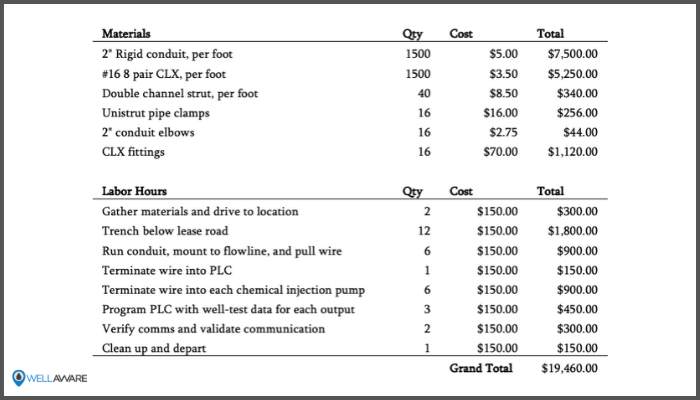
News, Insights, and more on Industrial IoT
Process automation is everywhere in the oil and gas industry. From emergency shutdowns to separator optimizers to smart completions, operators look to digital technologies to help them keep wells online and producing without spending an arm and a leg on manpower. And automation doesn’t just reduce costs associated with people; it also can create significant safety and environmental benefits too!
Like what you're reading? Sign up for updates!
Why then, when well pads are covered in PLCs and actuators and drives, have oil and gas operators not been successful in automating chemical injection systems? Numerous vendors offer automation systems to help operators improve chemical treatment outcomes, typically involving things like auto-calibrating injection pump controllers, temperature-based injection logic, or flow rate feedback loops to drive chemical injection rates based on PPM targets and real-time flow measured at the meter. Why haven’t these systems taken off, given the promise of reduced chemical costs, better treatment accuracy, and lower production downtime, all of which nearly guarantee lower operating expenses?
Chemical automation doesn’t work because of a potential for negative ROI
The answer, it would seem, doesn’t lie in a faulty algorithm or in unrealistic positive business outcomes. Controlling chemical injection to match production rates does not require complex logic or math. And if done well, the results can be quite good. A simple PLC algorithm to read production flow rates from a test separator and adjust the duty cycle of a chemical injection pump to maintain constant target PPMs can actually result in either a significant reduction in chemical costs, at the very least, or more importantly in a serious improvement in asset integrity and thus in production uptime and hydrocarbon quality.
The problem with this seemingly simple solution, instead, lies with the actual physical install, and the rigorous and time-consuming process to put all of the components in place to achieve the result. As it turns out, implementing this simple logic actually takes an expensive and complex web of labor and materials. Let’s take a hypothetical situation:
Producer A just completed a multi-well lease with 8 horizontal wells co-located on a “super pad” and producing into a commingled tank battery at a nearby facility. Each well requires a combination scale and corrosion inhibitor to be injected at 120 PPM against water production. After completion, the producer performs well tests to capture initial potential and to perform well allocations based on lease production data.
To automate the chemical injection rates for each of these wells now requires a signal from the water-leg of the facility separator to be wired (or, potentially, wirelessly transmitted) back to the chemical injection pump at each of the wellheads. Let’s assume that the wellpad is 1,000 feet as the crow flies from the facility, and between them is a lease road and a frac pond with a berm that makes wireless transmission infeasible.
So, in order to get these signals from the facility to the wellhead, the operator needs to run around 1,500 feet of conduit, trenched under the lease road, and run 8 pairs of cable from the water leg flow meter or PLC to each of the chemical injection pumps. Then they need to have an automation tech program the well-test data into the PLC to ensure that the right allocation is making it back to each wellhead. This will occasionally need to be updated as new well-tests are performed.
Line Item Expenses
Physical Implementation of Traditional Chemical Automation

At over $19,000, this project represents a big expense that would probably exceed the cost of the chemical injection systems themselves. And this cost doesn’t include oversight, repairs, updates to well-test data, SCADA integration costs, visualization setup costs, automation logic programming, and more! We might even assume these costs could double, depending on the complexity and region where the work is being done. At this point, operators are gambling on whether or not this project actually even provides a return on investment. Can they really save $4,000 per well on chemical costs before the system becomes obsolete? Do they know that this system will actually reduce well failures? While the system might provide a return at some point during its lifecycle, this is a financial risk that most operators just aren’t willing to make.
Operators need a better way to automate chemical injection rates
WellAware offers just the solution. Our cloud-based On Demand Chemical automates chemical injection rates in real-time using well-allocated production data. Instead of relying on complex installations of wiring and PLC programming, however, we manage the solution much more simply. WellAware establishes a secure connection to the Operator’s production data historian or SCADA system, with read-only access to just the data required to drive updates in chemical injection rates. This setup process usually takes only a few hours, and it only needs to be done one time. As new well-allocated production rates become available in SCADA, WellAware automatically sends new injection rate setpoints to the chemical pumps associated with each well. This ensures that chemical rates always match production rates, without having to deal with the expense of traditional automation setups.
Here are a few ways you can learn more about WellAware's On Demand Chemical Solution:
Have a Question?